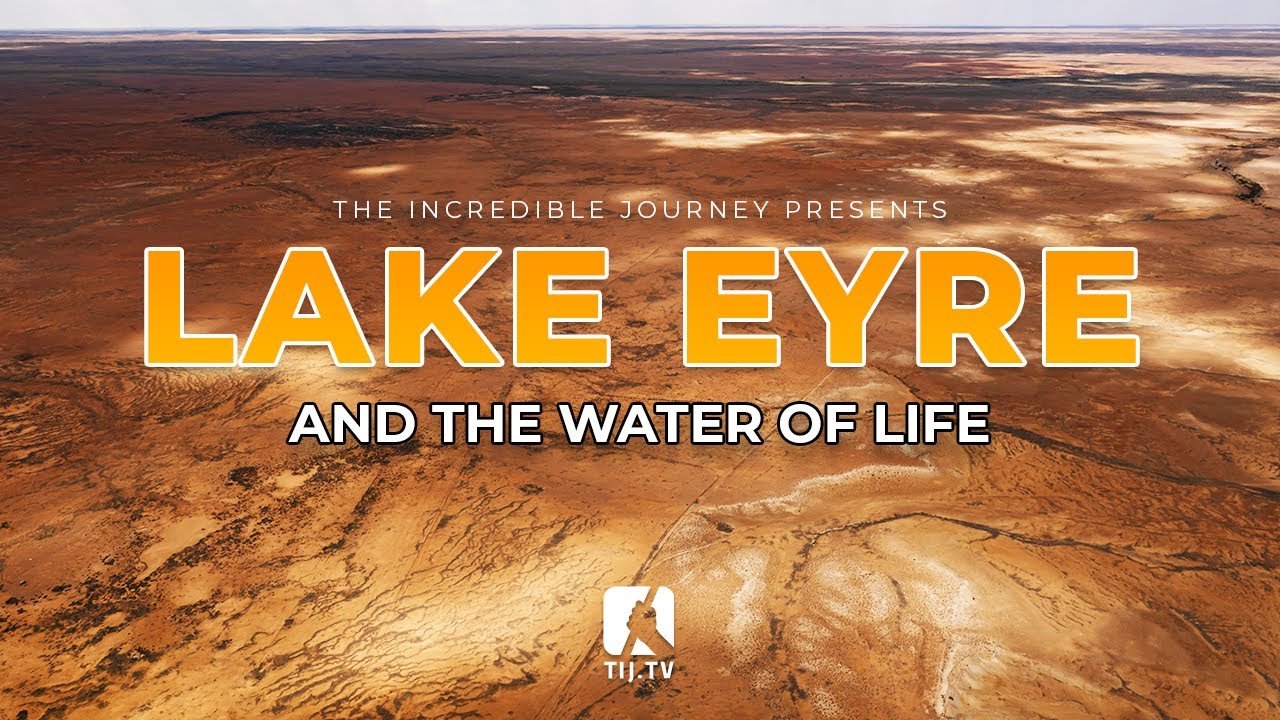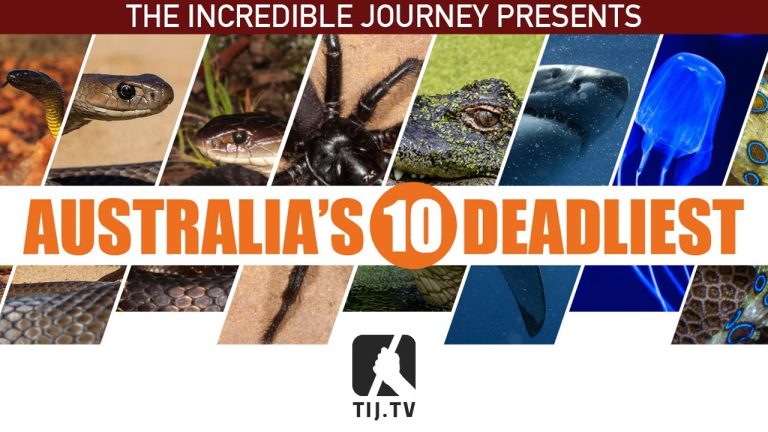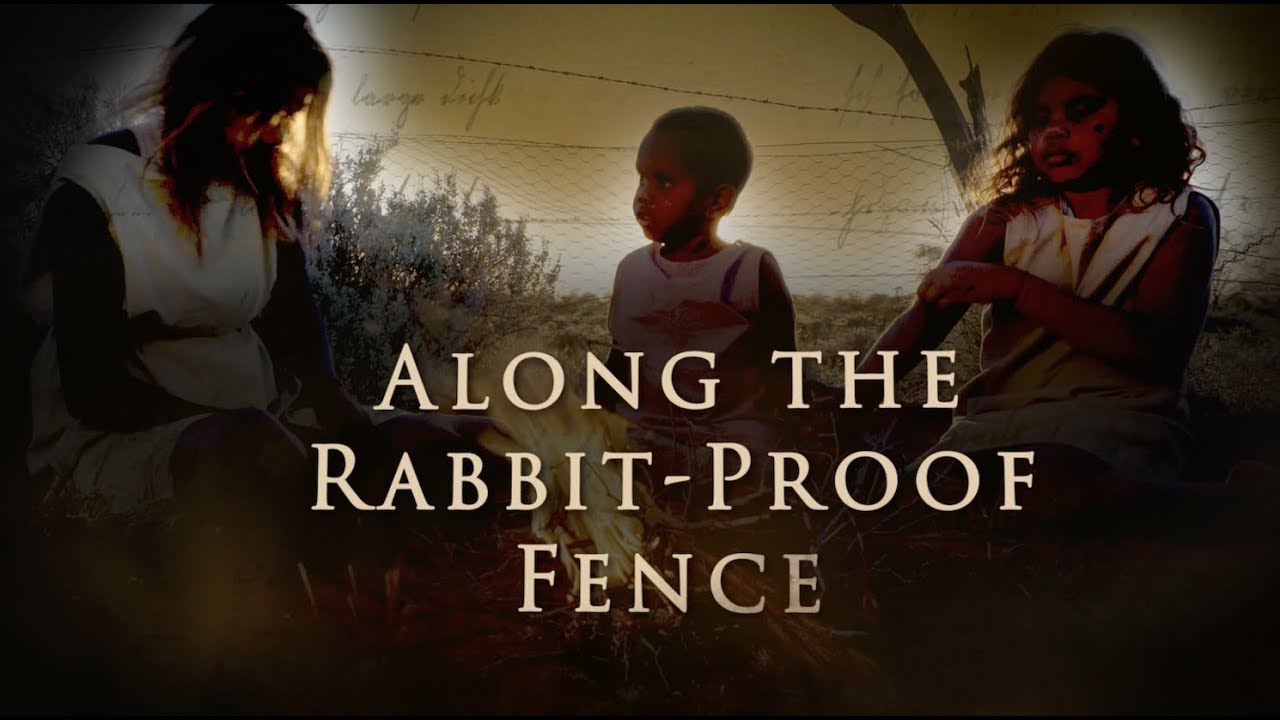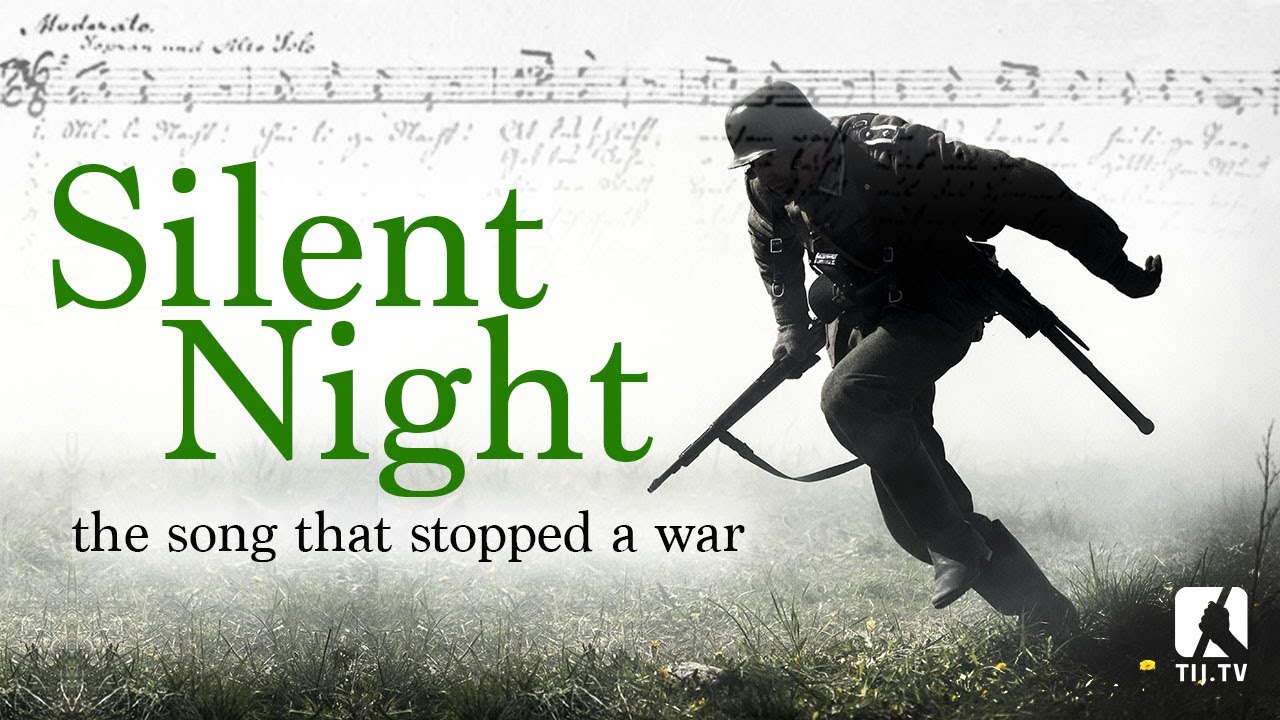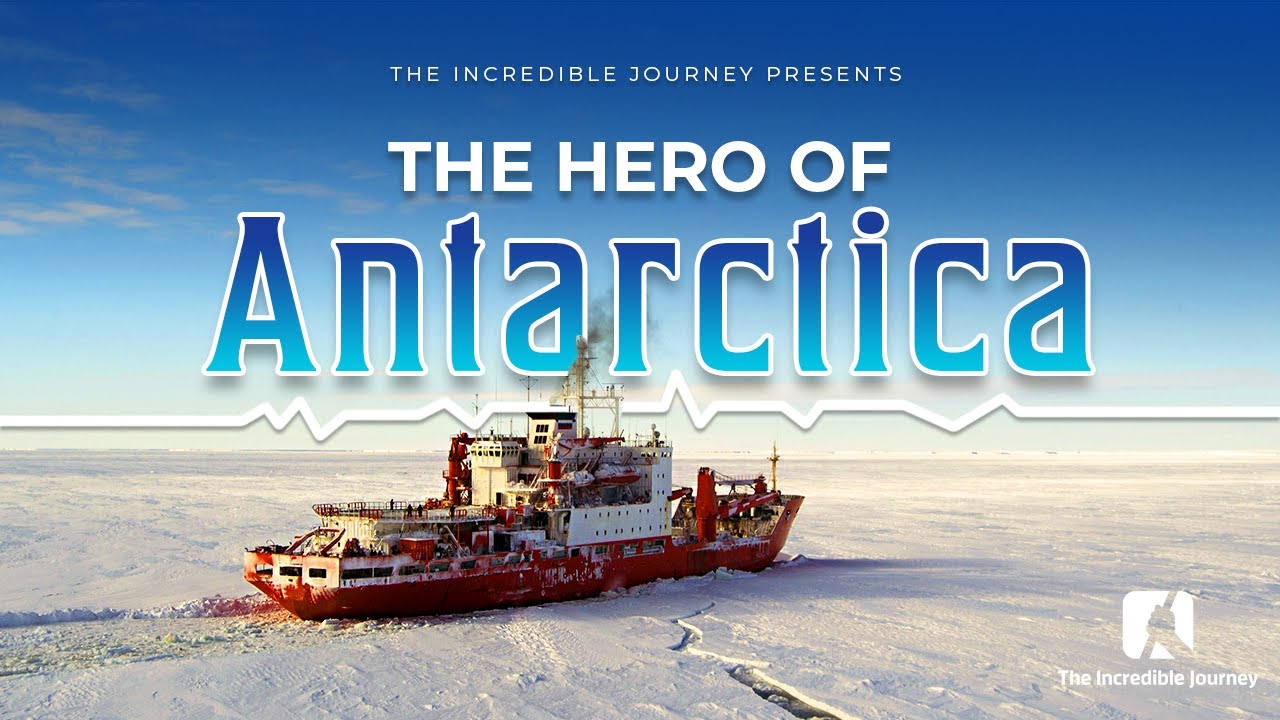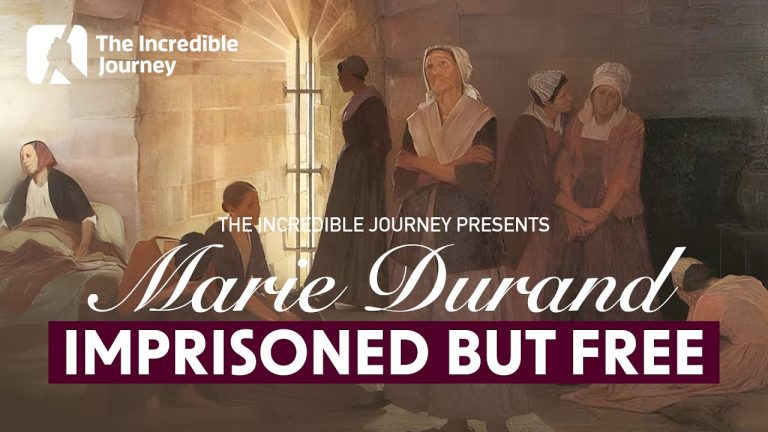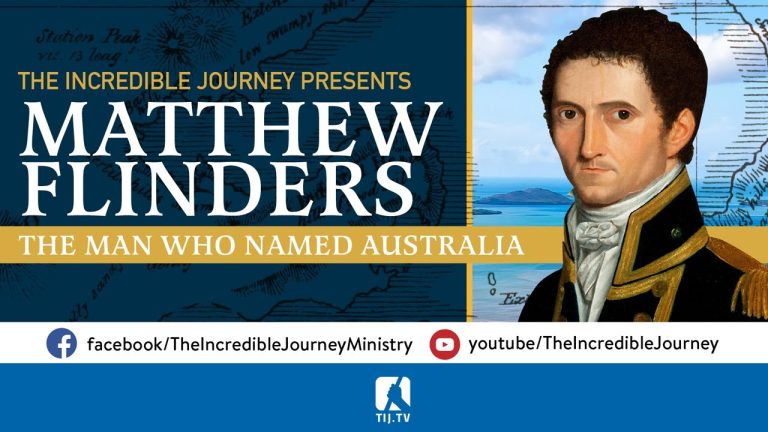Lake Eyre and the Water of Life
Australian outback is dry. Water is vital and precious. It’s scarce out there. Most years see very little rainfall. Survival is a challenge. Life is tough.
But about every twenty-five years or so, cyclones and heavy rains in Queensland and Northern Australia, send floodwaters on a 1,000km journey south to nearby Lake Eyre, which on the rare occasions that it fills is the largest lake in Australia. As the water flows across the flood plains and fills Lake Eyre, it transforms the area and sparks a greening of the desert. It brings life and vitality to one of the driest and most inhospitable places on earth. The area just comes alive. Unlike the water that flows into Lake Eyre, that only comes fully every 25 years or so, and even then is soon gone, this program will reveal to us the living water that will satisfy forever, quench our thirst forever, satisfy our soul and lead us into eternal life.
www.tij.tv
Facebook.com/TheIncredibleJourneyMinistry
(dramatic music)
– William Creek is the
smallest town in The Outback
and probably in all of Australia.
The entire population is just 10.
The town is located on a salt bush plain
880 kilometres north of Adelaide,
on the Oodnadatta Track.
And, is approximately halfway
between Marree and Oodnadatta.
And 160 kilometres east of Coober Pedy.
The old saying is really true here,
blink and you’ll miss it.
The hotel at William Creek
is the only pub and accommodation
on the Oodnadatta Track
between Marree and Oodnadatta.
And, is one of Australia’s iconic
and most loved Outback hotels.
The town relies entirely on
tourism as its main industry.
Overnight guests and events
can increase the population
20 times, to over 200.
William Creek is entirely surrounded
by the world’s largest
cattle station, or ranch,
Anna Creek Station.
It covers over 24000 square kilometres,
or six million acres.
And is even larger than Israel or Wales.
Anna Creek, the world’s
largest cattle station
and William Creek,
Australia’s smallest town,
are situated in the desert.
And both are dependent
on one thing for their survival, water.
It’s not a coincidence that both are named
after the local creeks or
streams that run near by.
Water is vital and precious.
It’s scarce out here.
Most years see very little
rainfall in this region.
Survival is a challenge.
Life is tough.
But occasionally, about
every 25 years or so,
cyclones and heavy rains in Queensland
and Northern Australia send flood waters
on a 1000 kilometre journey south
to nearby Lake Eyre, the
largest lake in Australia.
As the water flows across the floodplains
and fills Lake Eyre,
it transforms the area
and sparks a greening
of the desert.
It brings life and vitality
to one of the driest
most inhospitable places on earth.
The area just comes alive.
Join me, on a journey to Central Australia
to visit our smallest town,
largest cattle station
and largest lake.
And, to witness a unique
and amazing transformation
as the water flowing into
Lake Eyre changes the country
and brings green luscious
landscapes to the dry desert.
And, perhaps we’ll discover what water,
and especially the water of life,
can do for us as well.
(dramatic music)
You don’t need a street map
when you visit William Creek.
The Outback’s smallest town.
Everything is conveniently lined up
along its one and only
street, the Oodnadatta Track.
All the sightseeing attractions are found
in a short distance in
area between the hotel
and the store.
You don’t have far to
walk to take it all in.
Memorial Park offers displays of some
unusual means of transport
that cover a period
highlighting mankind’s progress
in our methods of travel.
There’s an old wooden waggon
that was drawn by oxen or camels.
Then, there’s an old steam engine
next to the remains of the
historic Ghan Railway Line,
that ran through The Outback
connecting Adelaide and Darwin.
And there’s also the
first stage of a rocket
from the adjoining
Woomera Prohibited Area,
where British rockets
were launched in the 60s
and tests were conducted to
send a satellite into orbit.
You sure find the unexpected
here in William Creek.
For example, would you
expect to see a parking metre
in the middle of nowhere?
Well, there’s one in William Creek.
The parking metre seems to be very odd
in such a remote place.
However, it’s for charity.
And, collects donations for the
Royal Flying Doctor Service.
This small town is completely surrounded
by Australia’s largest cattle
run, Anna Creek Station.
The Anna Creek homestead is 20 kilometres
from the town.
Anna Creek Station covers an
area of 24000 square kilometres
which is larger than
some European countries.
Now, to give you an idea
of the enormous size
of this cattle property,
it’s two million acres,
or 8000 square kilometres
larger than it’s nearest rival,
Alexandria Station, which is north of here
in the country’s Northern Territory.
It’s over seven times the
size of the United States’
biggest ranch, King Ranch in Texas.
The property was originally
established in 1863.
But, moved to the William
Creek location 1873
when the present homestead was built.
Originally, the Anna Creek
Station ran mainly sheep.
But, due to constant
losses from dingo attacks,
they switched to cattle.
In 1935, the station was
bought by Australia’s
cattle king, Sidney Kidman,
who owned large areas
of land across Australia
during his lifetime.
Kidman was 13 when he
ran away from his home
in Adelaide in 1870,
with five shillings in his pocket
and one-eyed horse he had
bought with his savings.
In his teen years, he worked as a drover,
a stockman, and livestock trader,
and made money supplying
services to new mining towns
springing up in the outback.
Eventually, he had enough to
buy his own cattle station.
He began acquiring one farm after another,
until he was the biggest
landowner in the world
by World War One.
At one point, the size
of Kidman’s properties
exceeded the size of the United Kingdom,
and ran a herd of nearly
200,000 head of cattle.
Anna Creek remained part
of the Kidman cattle empire
until it was acquired
by new owners in 2016.
It’s one of over 56 cattle
stations in Australia
whose size exceeds 5000 square kilometres.
And, one of 20 whose size
exceeds 10000 square kilometres.
And, one of four that exceeds
15000 square kilometres.
And the only one that exceeds
20000 square kilometres.
The size and remoteness
of these cattle stations
determines the way of life out here.
Life is isolated.
On some of the stations,
the next human settlement
is a day’s drive away.
Most of these Outback cattle stations
have their own airstrip.
And, the mail plane will
delivery mail and supplies
on a regular basis.
But, they’re more fortunate at Anna Creek,
because the Coober Pedy
Oodnedatta One Day Mail Run,
delivers mail twice a week,
and also brings a small amount of freight.
Children don’t go to school
on many of these large cattle stations.
Their school is the School of the Air.
In the past, the teaching
medium was radio.
Today, computers and satellites
have replaced the radios.
But, the title, School of
the Air, still remains.
And it’s one of the icons of The Outback.
Any medical emergencies
out here are frightening,
because of the vast
distances in The Outback.
These remote cattle stations
are a long way from hospitals
and medical expertise.
And so, many of the stations depend on
the Royal Flying Doctor
Service in medical emergencies.
That’s their lifeline.
The Royal Flying Doctor
Service of Australia
is one of the largest
and most comprehensive
aeromedical organisations in the world.
It provides emergency and
primary healthcare services
for the remote areas of Australia,
including many of the cattle stations.
There are a lot of Outback
stockman and station-hands
who’ve been seriously injured out here,
who owe their lives to the
Royal Flying Doctor Service.
These cattle stations are so large,
and the grazing area so spread out,
that it takes weeks to
round up all the cattle
during the mustering season.
Back in the old days,
stockmen used to ride out on horses
to round up the cattle.
A lot of the mustering is
still done on horseback
because of the rugged nature
of the Australian Outback.
However, more and more stations
are now using helicopters,
light aircraft, motorbikes and quad bikes
to help with rounding up the cattle.
But, horses are still
important to the operations
of many of the large
Outback cattle stations.
Most of the large cattle
stations, including Anna Creek,
still follow the traditional Outback style
of farming cattle.
It’s a very natural way.
The animals are basically wild.
They are usually born and grow
up without any human contact.
They are grass-fed and rarely require
any chemical treatment.
And there’s plenty of
room for them out here
on Anna Creek Station.
Over 24000 square kilometres,
and they sure need it.
This area, the central region
of the Australian Outback,
is so dry, and the vegetation so sparse
that a large amount of country
is needed to support enough
cattle to make a living.
Basically, everything out
here depends on water.
In drought years, the size of the herd
at Anna Creek Station can drop below 5000.
But, in a good season,
when the floods come,
the rains fall and conditions improve,
the station is capable of carrying over
17000 head of cattle.
And this is a good season, there’s water.
Finally, the floods have
come from the north,
and that’s evident by what is happening
near the Oodnadatta Track,
at Australia’s largest lake, Lake Eyre.
Early European explorers to Australia
were confident they
would find an inland sea
in the middle of the dry continent.
In 1840, Edward John Eyre
was the first European to
lay eyes on the huge lake,
which now bares his name.
But, as for the inland sea,
well, Lake Eyre was bone dry.
Today, it’s officially known
as, Kati Thanda Lake Eyre.
And to get there, we’ve
gotta continue our journey
along the Oodnadatta Track.
It’s one of the most historic
Outback trails in Australia.
It follows an ancient trading route
used by Aborigines for thousands of years,
that follows a series of springs
fed by the Great Artesian Basin.
To cut a long story short,
rain falling on the Great
Dividing Range, over time
travels halfway across the country
via an underground aquifer.
Porous rock sandwiched between
layers of nonporous rock.
Where the aquifer bends up
to meet the earth’s surface,
the water is released as springs,
and out here, water is life.
These springs proved vital
for the early Aborigines
and later for early
explorers and settlers.
There are many of these springs
along the Oodnadatta Track,
and throughout this dry region.
These spring complexes often have
numerous active spring groups.
One of these is Coward Springs,
whose Aboriginal name
is, Pitha-kalti-kalti.
These springs were a resting place
for the Aboriginal people
as they travelled north for trade.
This chain of springs
also provides sustenance
and water for the large
variety of native wildlife
found in the region of
the Oodnadatta Track.
There’s kangaroos, wallabies,
emus, sand goannas,
bearded dragons, geckos, perentie lizards,
and several species of poisonous snakes.
Dingoes are found outside the dog fence.
It’s the longest manmade
structure in the world.
It was built to protect
sheep from marauding dingoes.
It marks the boundary between sheep
and cattle country.
Cattle are run to the north,
because they can withstand dingo attacks.
The more vulnerable sheep are run
to the protected south.
Water from the springs also support
the numerous desert varieties of bird life
found throughout this dry region,
such as eagles, bustards or bush-turkeys,
budgerigars, galahs, parrots and finches,
to name a few.
With these springs and others
providing reliable water,
this became the main route north.
Then came The Overland Telegraph,
followed by The Great Northern Railway,
later The Ghan.
Finally, the Oodnadatta
Track as we know it today.
It’s an unsealed 620
kilometre Outback road
passing from Marree in the southeast
to Marla in the northwest, via Oodnadatta.
Along the way,
the track passes the
settlement of William Creek
and the southern end of
Kati Thanda Lake Eyre.
The sheer enormity of
Lake Eyre is mind blowing.
This is Australia’s largest lake
and the world’s largest
internally draining catchment.
The rivers that feed the lake
cover an area of 1.2
million square kilometres.
It’s basin is so large that it crosses
the borders of three states.
And covers a sixth of Australia,
about the size of Spain.
William Creek, is the
closest town to Lake Eyre.
And the best vantage
point for viewing the lake
is 60 kilometres away at Halligan Bay.
It’s the lowest point in Australia,
at 15 metres below sea level.
Lake Eyre is divided into two sections
which are joined by the Goyder Channel.
These are known as Lake Eyre North,
which is 144 kilometres in
length and 65 kilometres wide.
And, Lake Eyre South, which
measure 65 kilometres long
and 24 kilometres wide.
For most of the time, Lake
Eyre is a dry salt lake.
Its seemingly endless expanse
of shimmering salt crystals
has lured explorers and
travellers over the years,
and still continues to do so today.
But, four times a century,
about every 25 years or so,
something incredible happens.
Cyclones and heavy rains in Queensland
and Northern Australia,
send flood waters on a 1000
kilometre journey south.
Networks of channels,
streams and floodplains
including the Diamantina,
Georgina and Cooper Creek catchment,
all converge and fill the
10000 square kilometre
Kati Thanda Lake Eyre.
And when it fills, the
influx of water, of birds,
and of life in general,
is one of the most
spectacular sights on earth.
Lake Eyre transforms from
parched desert and salt flats,
to prosperous waterway.
The water sparks a rare
greening of the desert,
and brings life to an
area that usually among
the driest, most
inhospitable places on earth.
The area just bursts into life.
What a difference water makes.
The transformation that
water brings to Lake Eyre
and the surrounding region
is a reminder that water is
one of the most important
substances on earth.
It sustains and it transforms.
All plants and animals
must have water to survive.
If there was no water,
there would be no life on planet earth.
And of course, that includes us as well.
Water is essential to humans.
Without water we can’t survive.
Water is involved in
every bodily function,
from digestion and circulation,
through to the control of body temperature
and the excretion of waste products.
Yes, we all need water.
And we’ve all experienced
the feeling of thirst.
And, the relief that
comes from drinking water.
And just as we have physical thirst
that can only be quenched
by literal water,
so also we have spiritual thirst
that can only be quenched or
satisfied by living water.
Consider for example, the Samaritan woman.
We don’t know her name or age,
but her conversation with Jesus
is his longest one on one conversation
recorded in the Bible.
That’s a good enough reason to
give this woman from Samaria
a closer look.
Here’s what happened.
Jesus was travelling
from Judea to Galilee.
On his way, he passed through Samaria,
although this was the fastest route,
it wasn’t the only one.
Most Jews would take a longer route
just to avoid the Samaritans.
They hated the Samaritans,
because although they, in a sense,
shared a common heritage,
the Samaritans had intermarried
with the enemies of the Jews
and had corrupted their
heritage and their beliefs.
So, to the Jews, the
Samaritans were outcasts.
But, Jesus chose deliberately
to travel through Samaria.
Why?
Well, as Jesus became
weary from his journey
he came to a well, and at Jacob’s well,
Jesus met a Samaritan woman
whose life was in a downward spiral.
Five husbands, and decades of loose living
had left their mark.
But, when she met Jesus that day
her life would be
transformed, changed forever.
This Samaritan woman went to
the well out of necessity.
She went to get something she
couldn’t live without, water.
As she approached, Jesus was there,
and he asked her for a drink of water.
Here’s how the Bible describes
it in John chapter four
verses five to seven.
“So he came to a town in
Samaria called Sychar.
“Jacob’s well was there,
and Jesus, tired as he was
“from the journey, sat down by the well.
“It was about noon.
“When a Samaritan woman
came to draw water,
“Jesus said to her, ‘Will
you give me a drink?'”
Her response was filled with surprise.
As she questioned why Jesus
would break social norms and
customs by talking to her.
As we’ve already noted,
during this period it was
culturally unacceptable
for Jews and Samaritans to
have a conversation in public.
Just as it was for men and women.
Jesus responded by telling
her that if she knew
who he was, she would
be asking him for water.
Because, he alone provided living water.
Notice how the Bible records
it in John chapter four
and verse ten.
“Jesus answered her, ‘If
you know the gift of God
“‘and who it is that asks you for a drink,
“‘you would’ve asked him
“‘and he would of given
you living water.'”
The woman was confused
by Jesus’s statement,
because it seemed physically impossible.
You see, water from the well was still,
not living or flowing.
So, here’s what Jesus told her.
It’s recorded in John chapter
four, verses 13 and 14.
“Everyone who drinks this
water will be thirsty again,
“but whoever drinks the water
I give them will never thirst.
“Indeed, the water I give
them will become in them
“a spring of water welling
up to eternal life.”
How wonderful, water that
will forever satisfy.
A spring of water leading to eternal life.
The woman said, essentially,
yes, this is the water I
want, living water, Jesus.
The one who forever quenches our thirst.
Satisfies our souls, and
leads us into eternal life.
As the story continues,
it becomes obvious,
this woman had been seeking fulfilment,
satisfaction, significance,
worth and value
in the ways and things of the world.
But, she was still thirsty.
You see, the ways and things of the world
may have quenched her thirst for a moment,
but in the end something was missing.
She was still longing for living water
that would never run dry.
As she encountered Jesus this day,
she finally came face to face with the one
who could give her value, worth,
satisfaction, fulfilment,
joy and eternal life.
He was the one who
could forever and always
meet her greatest needs and desires.
He entered her life with
a promise of endless water
and quenched thirst, a
fresh start, a clean slate.
Jesus, the living water.
When this happened, at
this life changing moment
the woman left her water jar
and returned to town to tell the people
about this man named Jesus.
Isn’t it interesting, that
she left her water jar?
On a spiritual level,
she’d found something so much better.
She didn’t need her water jar any longer
because she had tasted the living water
that never runs dry.
Due to this woman’s testimony,
the town people came to see Jesus.
And many believed in him.
Jesus gave this woman a new story.
No longer was she the woman
known for multiple husbands,
but rather the woman who
introduced her neighbours to Jesus,
the living water.
Instead of being an outcast
or a hated Samaritan,
she was an heir to God’s kingdom.
Jesus gives all of us a new story.
A story of hope, joy and a great future
despite our failures.
His love runs deeper than
the scars of our failures.
The story Jesus has for
you is so much greater
than anything you could imagine.
And so much more powerful
than any failure.
And remember this,
Jesus didn’t view this
woman as an outcast,
even though he culture of her day
labelled her as one.
Rather, he saw her as his created one,
a child of God, one he loved deeply
and called into his family.
Jesus knew everything about this woman
and yet he reached out
to her, befriended her,
gave her hope, inner peace and happiness,
and eternal life.
He gave her living water.
Yes, living water.
Not like the water that
flows into Lake Eyre,
that only comes fully
every 25 years or so,
and even then is soon gone.
No, the living water that Jesus offers
isn’t like that.
This living water will satisfy forever,
quenches our thirst forever,
satisfies our soul and
leads us into eternal life.
So, if you’d like to feel valued,
if you want true
satisfaction and fulfilment,
if you want to experience
inner peace and happiness,
if you want living water,
Jesus, the one who forever
quenches our thirst
and leads us into eternal life,
then I’d like to recommend
the free gift we have
for all of our Incredible
Journey viewers today.
This books is our gift to you
and is absolutely free.
There are no costs or
obligations whatsoever.
“Steps to Christ,” has brought
me hope, peace and happiness.
And, I want you to have a copy too.
So, make sure
you take this wonderful opportunity
to receive the free gift
we have for you today.
– [Narrator] Phone or text us
at 0436-333-555 in Australia.
Or, 020-422-2042 in New Zealand.
Or, visit our website, TIJ.tv
to request today’s free offer
and we’ll send it to you
totally free of charge
and with no obligation.
Write to us at GPO Box 274,
Sydney New South Wales 2001, Australia.
Or, PO Box 76673 Manukau,
Auckland 2241, New Zealand.
Don’t delay, call or text us now.
– If you’ve enjoyed today’s
journey to Central Australia,
and Kati Thanda Lake Eyre,
along with our reflections
of the living water
that Jesus offers us,
then be sure to join us again next week,
when we will share another
of life’s journeys together.
Until then, may God keep
you safe and give you peace.
Let’s pray.
Dear heavenly father,
thank you for the beauty
of Kati Thanda Lake Eyre
and the gift of water
that’s so vitally important
to our health and wellbeing.
But above all, thank you for Jesus
and his gift of living water
that brings us inner peace,
happiness and eternal life.
Lord, like the woman of Samaria,
we need that living water.
And so, reach out in
faith and accept it now.
And we thank you in Jesus name, amen.
(bright music)
(dramatic music)
